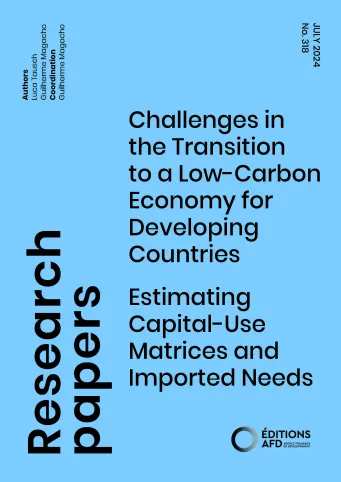Share the page
Challenges in the Transition to a Low-Carbon Economy for Developing Countries: Estimating Capital-Use Matrices and Imported Needs
Published on

The low-carbon transition in developing countries requires large investments in new technologies. However, since capital goods production is concentrated mostly in more advanced economies, this transition will generate a high demand for imported Machinery and equipment in these countries, leading to a higher demand for foreign exchange and potentially creating negative macroeconomic pressures. To account for the important role of capital goods in this transition process, we endogenize fixed capital in the input-output (IO) framework, estimating capital use matrices for six developing and emerging countries in Latin America and the Caribbean within the Gloria sectoral framework from 1990 to 2020. Based on these estimates, we show how the endogenization of capital can offer a nuanced sectoral perspective on the multidimensional challenges faced by developing countries during their low-carbon transition, including the external and socio-economic dimensions. Our findings suggest that the inclusion of capital in the IO framework reveals a substantial deepening of the external constraint for developing countries. We find that for every dollar invested solely to maintain current productive capacity, on average more than 45% leaks directly and indirectly to foreign producers through imports. Some socio-economic benefits of green investment, such as employment generation, are absorbed by the rest of the world, rather than fostering domestic job creation. Essentially, with the growing demand for foreign-produced capital goods generated by the low-carbon transition, developing countries will face an increased external constraint and substantial socio-economic imbalances as they embark on their low-carbon trajectory.
Useful Information
-
Authors
-
Luca TAUSCH, Guilherme MAGACHO
-
Coordinators
-
Edition
-
318
-
Number of pages
-
48
-
ISSN
-
2492 - 2846
-
Collection
-
Research Papers
